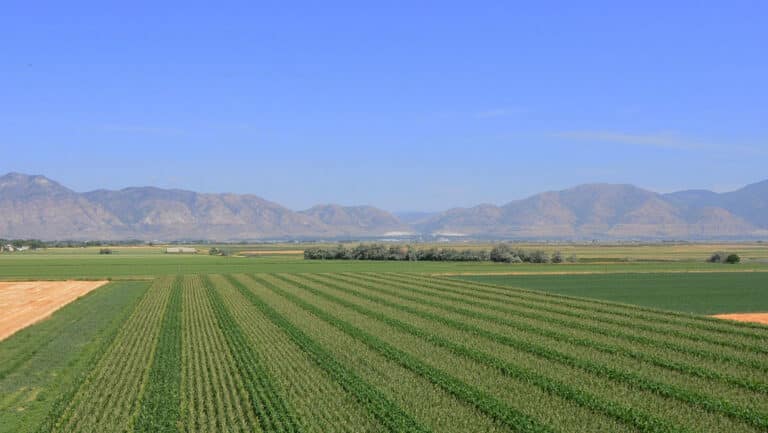Q&A: Farm Financial Strategies from Industry Expert
After more than 45 years in the business, Curt Covington knows a thing or two about farm financial strategies and what it takes for an operation to succeed.
When Curt Covington joined AgAmerica in 2020, he brought 42 years of experience in agricultural lending and a wealth of knowledge regarding the most successful farm financial strategies he’s seen over the years.
Prior to his role at AgAmerica, Curt was the Executive Vice President and Chief Credit Officer of Farmer Mac. Before that, he held the Senior Vice President position at Bank of the West for nearly 12 years. He also was a professor at California State University, Fresno’s School of Agricultural Economics, where he taught Ag Finance and Ag Accounting for 26 years.
Through these experiences, Curt has had the unique opportunity to visit farm operations across the country and developed a keen sense of the most common financial strategies farmers with a profitable agribusiness operation implement.
Here’s what he had to say.
Financial Strategies for Farmers: Q&A with Ag Lending Expert Curt Covington
Given your extensive experience in agricultural lending, what would you say are the most critical financial strategies U.S. farm owners should prioritize today?
In my experience, one of the most important things for farm owners to remember is that cash is king. Maintaining strong liquidity is essential for navigating the inevitable market fluctuations and unexpected expenses that come with farming. Additionally, it’s crucial to plan ahead. Farmers should have a clear long-term financial plan with set goals and contingency measures in place. This is especially important because the agricultural landscape can change rapidly. It’s because of this I’ve found that farmers are some of the most adaptive business owners I’ve met.
How have farm financial strategies evolved over the past few decades, and what lessons from the past are still relevant today?
Interestingly, despite all the advancements in technology and changes in the market, agricultural lending hasn’t kept pace. However, one noticeable change is the increased flexibility offered by the rise of alternative lending options for farmers. While these options can provide farmers with more choices, they aren’t all beneficial, so finding a trustworthy lender is more important than ever. At the end of the day, the fundamental practices of prudent financial management and building strong relationships with your lender remain as relevant today as they were in the past.
What are the common financial pitfalls you’ve seen farmers fall into, and how can they be avoided?
A common pitfall I’ve seen is a lack of planning and transparent conversations with key stakeholders in the operation. Without a clear financial plan and regular discussions about finances, farmers can make poor decisions that have long-term consequences. Another issue is a lack of documentation. Poor record-keeping can obscure a farm’s financial health and lead to missed opportunities for improvement. Finally, many farmers fail to establish an inner circle of experts. Consulting with financial advisors, accountants, and other professionals can provide invaluable insights and help avoid critical mistakes.
On the other side of the coin, what are some of the most successful financial strategies you’ve seen implemented by farmers and ranchers over the years?
One of the most successful strategies I’ve observed is the responsible leveraging of equity. When done right, farmers who use equity to expand operations or invest in profitable operational enhancements often see significant returns. Another key strategy is effective debt management. Maintaining a healthy balance between borrowing and cash flow allows farmers to grow their operations sustainably without overextending themselves financially.
When it comes to managing farm debt, what are some best financial strategies that you recommend to ensure long-term financial stability?
Debt consolidation is one effective practice, as it allows farmers to combine multiple debts into a single, more manageable loan, often reducing interest rates and simplifying payments. Another is utilizing a blend of alternative and conventional financial products to balance risk and opportunity. Lastly, it’s crucial for farmers to be proactive and transparent with their lenders. Regular communication and honesty build trust, which can be invaluable when navigating financial challenges.
What factors should farmers consider when deciding on a financial strategy, whether it be refinancing existing debt or taking on a new loan?
Farmers should view their relationship with their lender much like a marriage—mutual understanding, respect, and trust are essential if you want the relationship to thrive. When considering refinancing or taking on a new loan, it’s important to consider if new financing aligns with both your short-term needs and long-term goals. Additionally, farmers should carefully assess the potential risks and rewards, keeping current market conditions and their financial stability in mind. Having a lender you trust can really lighten this load.
How can farm owners prepare for unexpected financial challenges, such as extreme weather events or sudden changes in market conditions?
Preparation for unexpected challenges begins with securing adequate crop insurance and utilizing prepaid contracts to protect against financial shocks. Additionally, it’s wise for farm owners to build and maintain an emergency fund. This reserve can provide a crucial buffer against unforeseen expenses, helping to stabilize the farm’s finances through tough times.
What advice would you give to farm owners looking to invest in new technology or expand their operations? How should they assess the risks and rewards?
Before making any significant investment, it’s important to conduct a thorough cost-benefit analysis. This means carefully considering the potential returns and risks associated with the new technology or expansion. It’s also crucial to consider scalability—can the investment grow with the operation without causing financial strain? Consulting with financial experts and peers who have experience with similar investments can also provide valuable insights.
How can farmers balance the need for growth with the need to maintain financial resilience, especially in uncertain economic times?
Balancing growth with financial resilience requires a measured approach. Farmers should expand operations gradually, ensuring that each step is financially viable. It’s also important to continuously assess and manage risks, avoiding the temptation to over-leverage the farm’s assets. Finally, farmers should focus on investing in areas where they already have a competitive advantage, ensuring stability even as they pursue growth.
Equipping Rural America with Farm Financial Strategies that Work
As the nation’s largest independent financial firm for Rural America and the first nationwide agricultural mortgage REIT of its kind, AgAmerica brings a holistic and transparent approach to agricultural finance—something the industry has long needed. By providing additional options, resources, and guidance that go beyond the confines of traditional financial institutions, AgAmerica is committed to supporting the long-term success of farmers, ranchers, and rural landowners nationwide.
Learn more about how we can help you achieve your financial goals and connect with a financial expert today.






